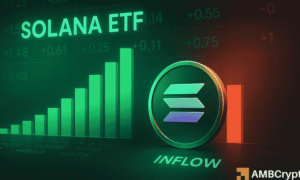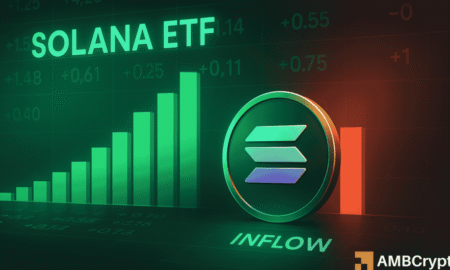Analyzing the Instability of Bitcoin and Ethereum: Is a Market Reset on the Horizon?
In recent weeks, the cryptocurrency market has experienced significant turmoil, particularly for key players like Bitcoin (BTC) and Ethereum (ETH). The combined crypto market cap has suffered a staggering loss of about $1 trillion since the October crash, fueling uncertainty and fear among traders. With macroeconomic conditions becoming increasingly complex, investors are left questioning whether this downturn signifies a deeper market reset or merely a short-lived dip.
Current Market Sentiments: A Bearish Outlook
The current sentiment in the crypto space is unambiguously negative. Fear has reached unprecedented levels, significantly impacting risk appetite. Despite a relatively stable price holding for Bitcoin above $86k initially, the asset witnessed a swift decline to around $85,300, revealing startling lack of support. This volatility has led to massive liquidation events, with approximately $957 million evaporating from leveraged longs in just 24 hours. The reluctance of bulls to treat this dip as a buying opportunity indicates a pervasive sense of caution, leaving the market vulnerable to further declines.
Overexposure Risks for Long Positions
Despite an environment rife with uncertainty, many traders remain heavily long on Bitcoin and Ethereum, particularly visible through the BTC/USDT perpetual long/short ratio on Binance, which shows an 80% long skew. This overexposure could spell disaster, as any sharp market movement can lead to significant losses. Both Bitcoin and Ethereum have exhibited similar patterns, with Ethereum following Bitcoin’s price movements closely. As Ethereum dipped below $2.8k, concerns loomed around overextended positions in both cryptocurrencies, raising the possibility of impending liquidations.
Macro Conditions Intensify Crypto Complications
The broader macroeconomic landscape plays a crucial role in influencing cryptocurrency markets. Recent labor market data revealed the addition of 119,000 jobs in September, which consequently diminished the likelihood of upcoming rate cuts from just 35% down from near certainty. This troubling trend amplifies fears around economic stability, ultimately putting pressure on both Bitcoin and Ethereum. As major U.S. data releases are being canceled, traders face a heightened sense of uncertainty that complicates their investment strategies.
Building a Case for a Market Reset
With fear dominating market sentiments, the potential for a more profound reset grows stronger. The abrupt shift in optimism regarding rate cuts—from an overwhelming 98.8% to a mere 35.4%—signifies a dramatic sentiment change that traders cannot ignore. The Fear and Greed Index has consistently shown red signals, now hitting an all-time low, indicating a collective anxiety among investors. Coupled with the backdrop of rising U.S. Treasury yields and bearish stock performance influenced by AI, these factors suggest a macro bubble that could be on the verge of bursting.
The Path Forward: Navigating Continued Volatility
As Bitcoin and Ethereum grapple with ongoing volatility, investors must reevaluate their strategies. The present market conditions expose them to potential deeper pullbacks, likely exacerbated by existing concerns. The current landscape requires vigilance; a market reset, if it materializes, may create opportunities for strategic plays but also substantial risks. Traders must weigh their positions carefully to navigate this period effectively, striking a balance between risk management and positioning for potential recovery.
Conclusion: A Cautious Approach is Essential
In conclusion, the current instability surrounding Bitcoin and Ethereum reflects broader macroeconomic challenges that point to a possible reset in the market. As fear levels remain high and investor risk appetites diminish, the landscape for cryptocurrencies remains precarious. While past performance and long positions suggest opportunities for gain, the present market realities require a more cautious and informed approach. Ultimately, understanding both market sentiment and macroeconomic dynamics can help navigate these turbulent times in the cryptocurrency arena.
















